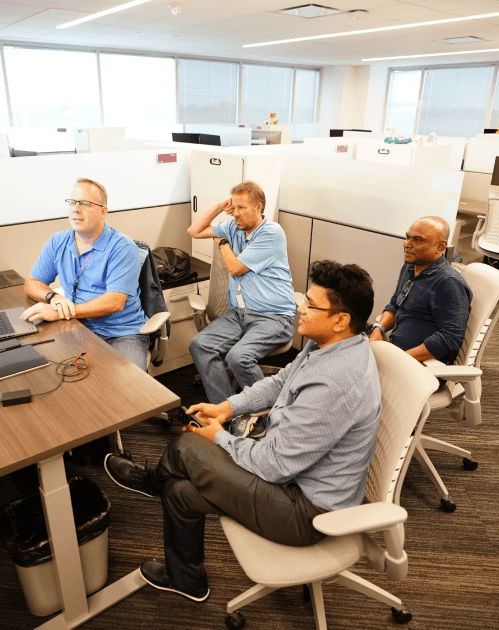How IdAM Helps State and Local Governments Validate Identities, Streamline Services, and Prevent Fraud
Best Practices
State and local governments face the daunting task of ensuring the confidentiality, integrity, and availability of government data across systems and services. It’s no small feat given that most public sector entities rely on a mix of siloed on-premises and cloud technology infrastructure.
Public sector entities also need to validate citizens’ identities each time they interact with government departments such as health and human services, transportation, and revenue. This process — though critical for security and fraud prevention — is often time-consuming and frustrating for both citizens and staff.
Implementing modern identity and access management (IdAM) systems and solutions is the most effective way to overcome these challenges while ensuring seamless experiences for all users.
How modern identity management benefits state and local governments
IdAM is a set of policies, processes, and technologies used to manage and secure digital identities and control access to systems. As state and local governments look to modernize their operations and data infrastructure, effective IdAM implementation will be a critical component in ensuring secure, efficient, and compliant identity management.
By implementing robust IdAM solutions, public sector entities can achieve:
- Tighter security: Cyberattacks on local governments are a monthly occurrence. Effective IdAM solutions ensure only authorized users have access to sensitive systems and citizens’ personal data, while introducing monitoring capabilities and audit trails that detect security breaches and noncompliance.
- Enhanced citizen services: Customer identity and access management (CIAM) — IdAM’s close cousin — removes roadblocks that have historically made it difficult for citizens to interact with the government and access online services like tax filing, license renewals, and permit applications.
- Improved efficiency: Single sign-on (SSO) simplifies the login process for both government employees and citizens, reducing the need to remember multiple usernames and passwords for siloed systems.
- Compliance with regulations: Modern identity and access management facilitates user consent and data access controls to ensure governments remain compliant with data privacy laws and federal regulations like HIPAA.
- Cost savings: By automating user management and strengthening security, robust IdAM solutions minimize IT costs and reduce risk of financial loss due to ransomware attacks.
- Data interoperability: Interoperability reduces the need to duplicate data, achieving accuracy and security. IdAM solutions can provide secure access to shared resources and data stored across legacy mainframes and cloud systems.
Invest in IdAM to improve citizen experiences and data security
The breadth and complexity of government services requires the ability to efficiently manage digital identities across multiple departments, systems, and user groups. And that requires taking advantage of leading-edge IdAM solutions.
A private-sector partner can provide access to the latest technology to meet your current needs and future-proof your operations. As you begin the process of linking siloed systems and centralizing data, the right partner can help ensure your IdAM implementation is successful by working alongside you to:

Streamline data.
Most legacy systems require citizens to create separate logins for each service they need to access. This makes it challenging for governments to validate identities and prevent fraud because people often use different email addresses for different accounts and various versions of their name (e.g., Alex instead of Alexandra). You can eliminate this issue by assigning every citizen a Globally Unique ID (GUID) that can be used to access all government services with a single sign on. And once GUIDs are in place, advanced machine learning and AI tools can help streamline existing data by identifying duplicate, unused, or orphan accounts.

Centralize databases.
After you’ve cleaned up your data, it’s important to do the same with your databases. Rather than setting up separate IdAM systems for each application, it’s best to create a central system that connects to databases used by multiple applications.
This consolidation streamlines the management of user identities and access permissions, improves overall security, and simplifies the process of monitoring and tracking user activities across different applications. It also reduces the complexity and overhead associated with independently managing multiple IdAM systems.

Validate identities.
There are two ways to validate citizens’ identities when you’re ready to push your IdAM solution live: create identities on demand or reconcile identities. Your partner can help you determine which approach will work best for your system setup.
Creating identities on demand involves inserting users into the new IdAM system the first time they attempt to access services and querying linked systems for profile matches. With the reconciliation approach, you would instead merge user information from all data stores into a super-set of data stored in the IdAM and then gradually remove duplicate or inactive identities.
Why Ensoso is the right partner for IdAM success in the public sector
With our deep public-sector expertise and leading-edge technology in your corner, Ensono can help you transform digital experiences for citizens while saving money and strengthening security.
We know technology overhauls are a challenge for public entities operating on shoestring budgets. Our IdAM capabilities enable you to streamline citizen identities across multiple databases into a centralized view, without the need to tear down your existing IT infrastructure — and we’ll remain by your side every step of the way.
Ready to explore how you can create frictionless, secure access to government services for citizens? Let’s talk about how we can help.